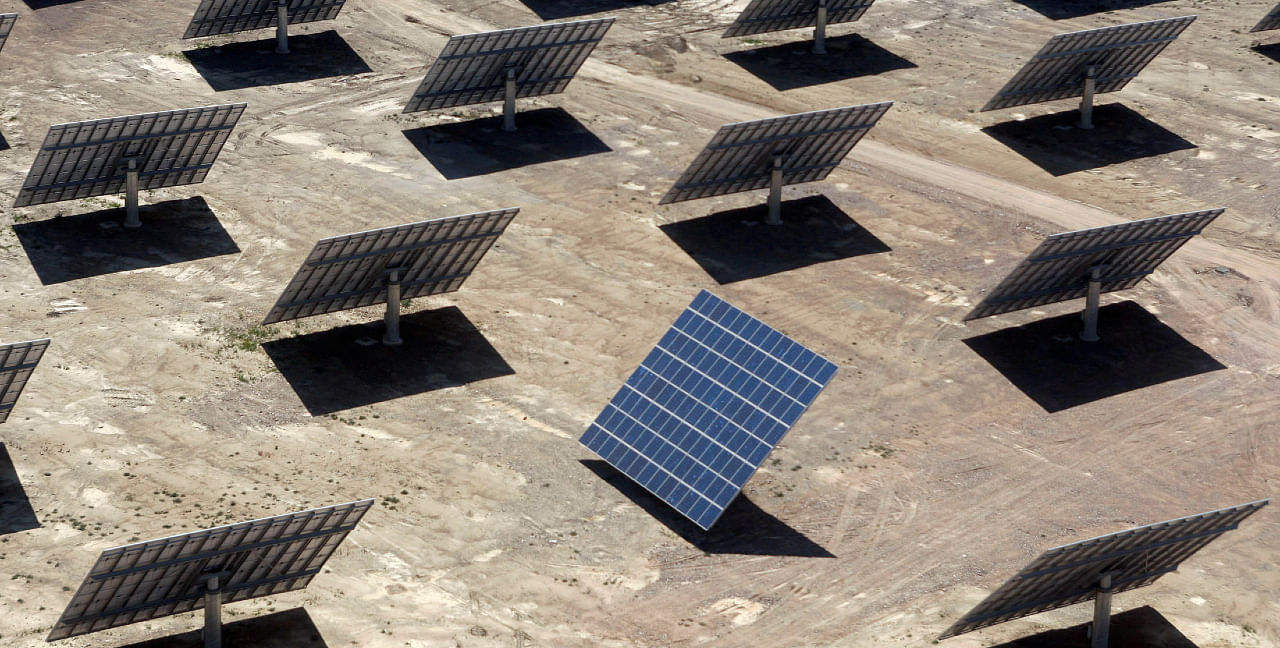
Overachieving solar targets is resulting in new challenges for Karnataka. It is not only making the state power surplus but also impeding the development of new solar projects in Karnataka. Karnataka has emerged as one of the top-performing states with a solar capacity of 7,295 MW (as of Dec 2019) against the MNRE‘s (Ministry of New and Renewable Energy) state target of 5,697 MW by 2022, and state government’s own target of 6000 MW by 2021. This exceptional performance was a result of flexible state policies and high solar irradiance in the state, which attracted large solar developers and new investors.
Along with solar installation capacity targets, another factor driving RE generation in the state is the renewable purchase obligation (RPO). While most of the states have failed to achieve even 60% of their RPO targets, Karnataka is able to achieve 100% of its annual RPO targets. Significant RE capacity development has led to higher RE generation and higher procurement of power by DISCOMs in Karnataka. This, in turn, has helped the state surpass its annual RPO targets.
Despite achieving both solar capacity and RPO targets, Karnataka’s overall power procurement cost from solar projects (average power purchase cost (APPC), ₹3.85/kWh) remains higher than that of the power procured from Karnataka Power Corporation Limited’s (KPCL) thermal and hydropower plants with an average price of ₹2.9/kWh.
Considering the high existing grid penetration by solar energy, in May 2019, Karnataka Renewable Energy Development Ltd (KREDL) ordered a temporary halt to bidding in the state for procurement of energy from new solar power projects.
A major reason behind this decision is that Karnataka fulfils a large portion of its energy needs from hydropower—the cheapest source of power for the state at a minimum price of ₹0.59/kWh. Another reason is the significantly low APPC of electricity from conventional sources. Moreover, despite high RE procurement, fixed prices have to be paid to thermal power generators. This raises the overall power procurement cost for DISCOMs. Thus, KREDL’s decision seems reasonable as it allows the already cash-strapped, debt-ridden utilities to prefer cheaper energy sources. Nevertheless, because of Karnataka’s high solar potential, it becomes imperative to explore alternative market options to keep the solar market attractive to developers.
A potential way forward to keep the RE market attractive for developers and investors is to look at other available market options. Large-scale solar developers in Karnataka with excess power can sell it to other states through bilateral power purchase agreements (PPAs) by using the interstate transmission system (ISTS) model. Further, short-term bilateral PPAs can facilitate the entry of new developers in the market even when power procurement by state DISCOMs is restricted.
Considering the inconsistent business nature of power trading markets, open access (OA) is a sustainable business option. Long-term OA regulations not only provide security to RE developers but also help fulfil the RPO compliance of the end consumer. Despite these benefits, DISCOMs oppose the OA market policy because it eats into their high-paying industrial consumer base. However, the pace of development in the OA market and the support provided by all state regulators to streamline OA regulations make the OA market an attractive avenue for new generators. Another solution to the excess power issue comes from the Central Electricity Regulatory Commission’s (CERC) newly-announced real-time market (RTM) regulations, 2019 for power trade between two entities located anywhere in the country. RTM will help both solar developers and conventional power generators to sell their excess power in almost real-time at reasonable prices.
Karnataka needs to support liberal market opportunities to keep large-scale solar development sustainable in the long term, as well as to optimally utilise the abundant solar resources in the state. An integrated approach will not only help maintain the state’s top position in terms of solar generation but also help other states accomplish their targets—through excess-power trade—and support multiple national missions for the RE sector.
(The writers work in the area of Energy and Power in CSTEP, a research-based think tank)